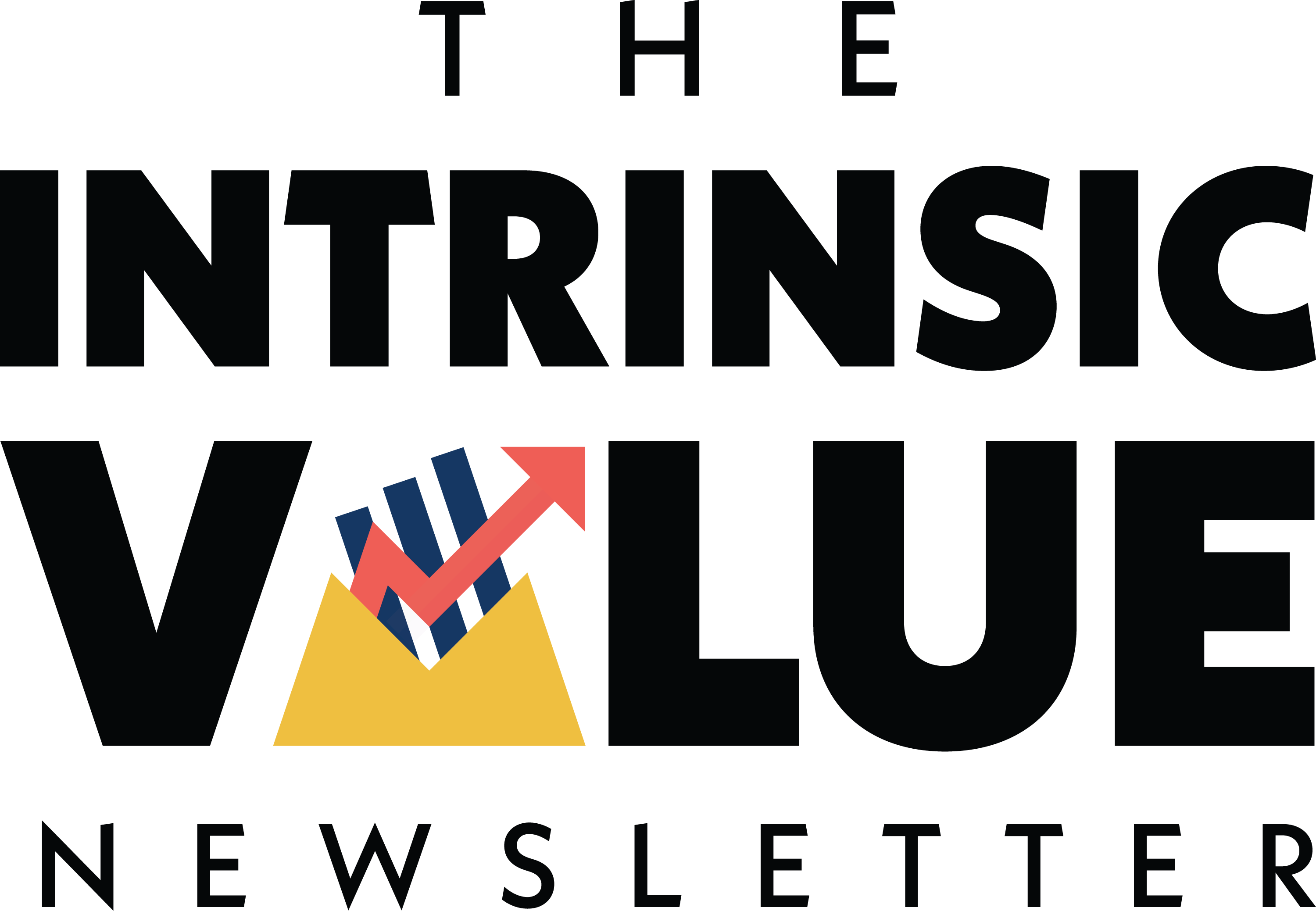Earnings Season Is Back!

Hi, The Investor’s Podcast Network Community!
Friday the 13th must mean bad news for stocks, right? 📉
Nada. The S&P 500 climbs higher 58% of the time on Friday the 13th. Since 1957, the average gain has been about 0.15%, above the average daily gain for the index.
💭 But when it falls in October, performance is notably weaker. Such was the case today, as stocks finished lower Friday but remain up about 13% year-to-date. More year-to-date returns are below.
— Matthew & Shawn
Here’s the year-to-date rundown for markets:
Today, we’ll discuss the three biggest stories in markets:
- Earnings season kicks off on a high note
- Why non-alcoholic beer sales are soaring
- Treasury bonds are all over the place
All this, and more, in just 5 minutes to read.
POP QUIZ
Which S&P 500 company was the first to report earnings for the third quarter? (The answer is at the bottom of today’s newsletter.)
Get smarter about valuing businesses in just a few minutes each week.
Get the weekly email that makes understanding intrinsic value
easy and enjoyable, for free.
Here we go again with another earnings season. The big banks were first to the plate, per usual, and so far, so good.
Collectively, the banks warned trouble is looming – to be fair, we’ve been hearing warnings for years now — but their earnings remain strong.
- JPMorgan, Wells Fargo, and Citigroup all beat expectations, together earning over $22 billion in profit last quarter, up over 30% from a year earlier.
- Higher interest rates, the talk of the town, made banks’ loans more profitable. Meanwhile, consumers are still spending, and the job market has stayed strong despite the Federal Reserve’s rate hikes.
Two sides to every story: On the flip side, more of their loans are going bad, American consumers are running out of extra cash, and uncertainty looms with the war in Ukraine and fighting in the Middle East. All of it could be headwinds.
- “This may be the most dangerous time the world has seen in decades,” JPMorgan CEO Jamie Dimon said.
- While that might be true, it’s worth noting that Dimon has been calling for a recession for a while now. It has yet to come.
Big bucks: Third-quarter profit rose thanks mainly to higher interest income as yields on long-term bonds sit at their highest point since 2007.
- Banks have raised the rates they charge on loans faster than they increase their payouts on deposits, meaning they get to keep more of their revenues.
- The whole picture could look much different for smaller banks, which report earnings next week.
Why it matters:
We know this: The economy remains resilient in a year many had said would be dominated by a major recession.
- We also learned this week that there was less stock trading last quarter and fewer big deals on Wall Street, but a recent jump in initial public offerings (IPOs) could mean good things ahead.
Credit card spending was up at all three banks, and people kept spending and borrowing — a sign that they might feel good about their financial state.
But one could argue that people are just trying to keep up with rising prices, from homes and cars to gas, trips, and groceries, and that continued spending isn’t necessarily a sign of economic health.
- The banks did say borrowers have fallen behind on loans at faster rates than pre-pandemic, thanks to higher interest rates — something to watch in the fourth quarter.
The bottom line: “The U.S. keeps surprising us with its resilience, so I think it’s hard to call,” Citigroup’s CFO said. “I do think we’re likely to land things in a softer way than we thought.”
Get your own store up and running with Shopify today. See for yourself why millions of entrepreneurs worldwide trust Shopify to bring their business to the next level.
Shopify makes it easy to start your own business, too 💰💰💰
Trusted by influencers and entrepreneurs globally. Start your free trial today.
Young adults are drinking less, giving zero-alcohol beers a moment.
In 2020, overall sales of beer soared. They’ve since stabilized. But as of last month, U.S. sales of non-alcoholic beer were up 32% from a year ago — sales have averaged 31% annual growth over four years.
- Heineken 0.0, the top-selling non-alcoholic beer in the U.S., has about 20% market share. Budweiser, Corona, and Guinness are all fighting for market share. Even craft breweries have entered the space.
- Non-alcohol versions of wine and spirits are also gaining popularity but lag behind beer sales.
Driving the trend: Health-consciousness is the biggest driver. Other possible theories include: People socializing more online and less in person, plus increased marijuana use.
Traditionalists and beer connoisseurs might not love the flavor of non-alcoholic beers, but they’re catching on. Savvy marketing by beer makers also helps. In ads, Corona on the beach appeals to many, whether the beverage has alcohol or not.
- Analysts say young adults are moderating their drinking, not necessarily giving it up altogether.
- For others, beer drinking becomes doable at lunch or before driving a car because there’s no alcohol involved. “These products are for beer lovers, beer drinkers,” said one brewing executive.
Heineken 0.0 was launched in 2019. A primary focus was to make “non-alcoholic beer look cool,” per the company, whether in cars, while making work presentations, or in meetings.
Why it matters:
New occasions for beer drinking mean the overall market could expand. More than half of the interest in non-alcoholic beer is from outside beer, such as soft drinks. And most of the sales are “incremental,” meaning they represent new growth rather than replacing existing sales of alcoholic beer. Big difference.
- Heineken now puts 25% of its global advertising budget in Heineken 0.0, even though it makes up a much smaller percentage of the band’s total sales. It’s now in 110 markets, including China and Japan.
Tech comes to beer? Improvements in brewing technology have made alcohol-free beer easier to produce without sacrificing (too) much quality. Sometimes, ingredients are added to the beer to compensate for the lost taste when alcohol is removed.
- As one beer pro explains, “When you take the alcohol out, because you had a fully fermented beer, what you have left is still very much a beer. The only issue you have then is you lose some of the aroma components…There’s a lot of brands that have just really nailed the flavor.”
It’s a fortunate trend for the beer industry. While microbreweries have become more prevalent in the last decade, overall consumption is down in the U.S., Europe, and other high-income countries.
Non-alcoholic beer is filling the void.
MORE HEADLINES
💬 OnlyFans CEO says their goal is to “change the internet”
🔫 Aerospace and defense stocks are back in vogue
🎨 You can now generate AI images directly in Google’s search bar
🤝 Microsoft completes its $69 billion takeover of Activision Blizzard
🚀 NASA rocket launches toward mysterious asteroid
✍️ Microsoft Outlook will soon write emails for you
In case you need any more reminders, Wall Street investors are often wrong. Even the very best investors can only hope to reliably be right a little more than 50% of the time. And this year, one of Wall Street’s hottest trades has been anything but right.
As record sums have flowed into the world’s largest U.S. Treasury bond ETF — betting that interest rates have peaked — the Fed has persisted with pushing rates higher and higher.
- And since interest rates and bond prices have an inverse relationship, these pros have watched their investments grind lower.
Heads I win big, tails I lose small: The investment logic is sound (which is why it’s been so popular!). With 20-year Treasury bonds sitting near 5% yields, even a small decline in rates of 50 basis points (0.5%) would mean a big payoff for investors.
- Specifically, investors would earn a total return of over 11% over the next year, including the price return from long-term bonds increasing in value as rates fall + the interest paid on the bonds.
- And the downside would be very limited. If interest rates continue another 0.5% higher, the total loss is only 1.1%.
Various versions of that trade have been popular throughout 2023 as the potential upsides have outweighed the downsides.
Why it matters:
As one investor put it, “It’s just the bond math.” If you’re not schooled in bond math, here’s a diagram that helps visualize things, showing the total percentage return for different types of bonds based on changes in interest rates:
300bp rise = +3%, 300bp fall = -3%, 150bp rise = +1.5%, etc.
But, but, but: The compelling payoff possibilities have helped bullish bond investors justify their losses in an otherwise painful year.
- With $17.6 billion flowing into the iShares 20+ Year Treasury Bond ETF (ticker: TLT), investors have bet big on the longer-term bonds that benefit the most from interest rates reversing.
- This past week, though, Treasury bonds across the yield curve have been all over the place.
- Choppy markets: Some investors jumped into Treasury bonds as a safe haven from a geopolitical crisis in the Middle East, while others have jumped out over concerns that a stubbornly strong economy and inflation data will force the Fed to keep hiking rates.
Read more
QUICK POLL
Prediction: Q3 earnings season will, in total, have what effect on the U.S. stock market?
Yesterday, we asked: Which legend investor (in their prime) would you prefer to manage all your money?
— About half of you picked Warren Buffett. “He is the GOAT!” a reader wrote
— Peter Lynch and Ray Dalio were in second place, with 11% of votes each
— Mohnish Pabrai and Joel Greenblatt earned about 7% of votes apiece
— Others commented names like Terry Smith, Jim Simons, and Tom Gayner.
TRIVIA ANSWER
Oracle kicked off the Q3 2023 earnings season for S&P 500 companies back in September, but most companies will be reporting in the coming weeks. You can see the full earnings reporting schedule here.
See you next time!
That’s it for today on We Study Markets!
Enjoy reading this newsletter? Forward it to a friend.
Was this newsletter forwarded to you? Sign up here.
All the best,
P.S. The Investor’s Podcast Network is excite launch a subreddit devoted to our fans in discussing financial markets, stock picks, questions for our hosts, and much more!
Join our subreddit r/TheInvestorsPodcast today!













